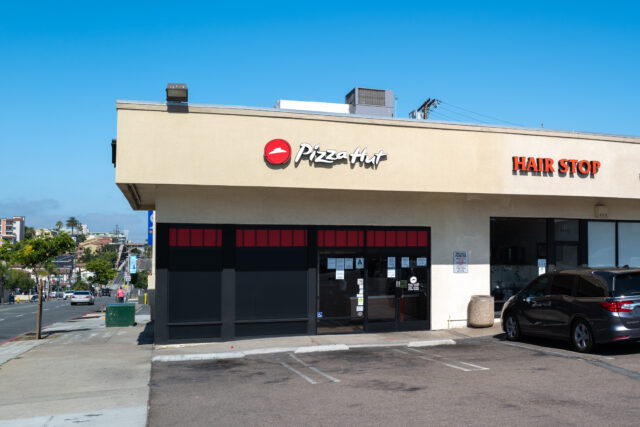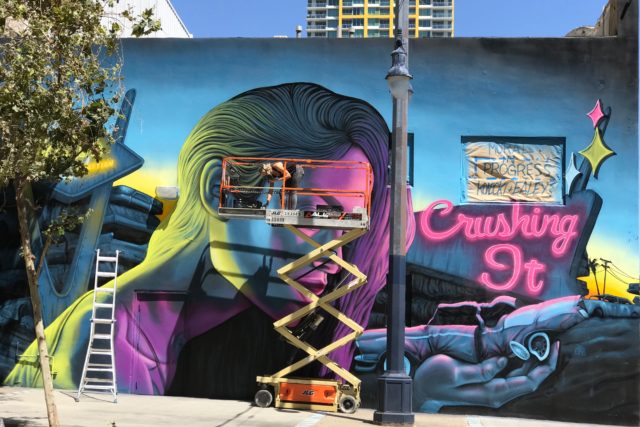From the Adams Ave. overlook, seen across the canyon to the backside of Franciscan Way, a tented home hugs the hillside. In early Summer, My wife and I walked through the multi-level dwelling during one of its countless Open Houses over the course of many, many months. The overly-expansive layout, square-footage (3,860), and $1.7 million asking price were reasons for our disinterest—and perhaps many other people. There is a pending sale, as of the week before Christmas, for $1.55M, which explains the extermination rig.
Californians tent homes to fumigate, which is common practice before a new sale closes. Think of it as a temporary tent city for vermin, before insecticide snuffs them out. Funny thing, tent city also refers to where groups of the downtown homeless gather together. If neighborhood banter on the NextDoor social network is revealing, there are many University Heights residents who view indigents as vermin they would like to eliminate.











